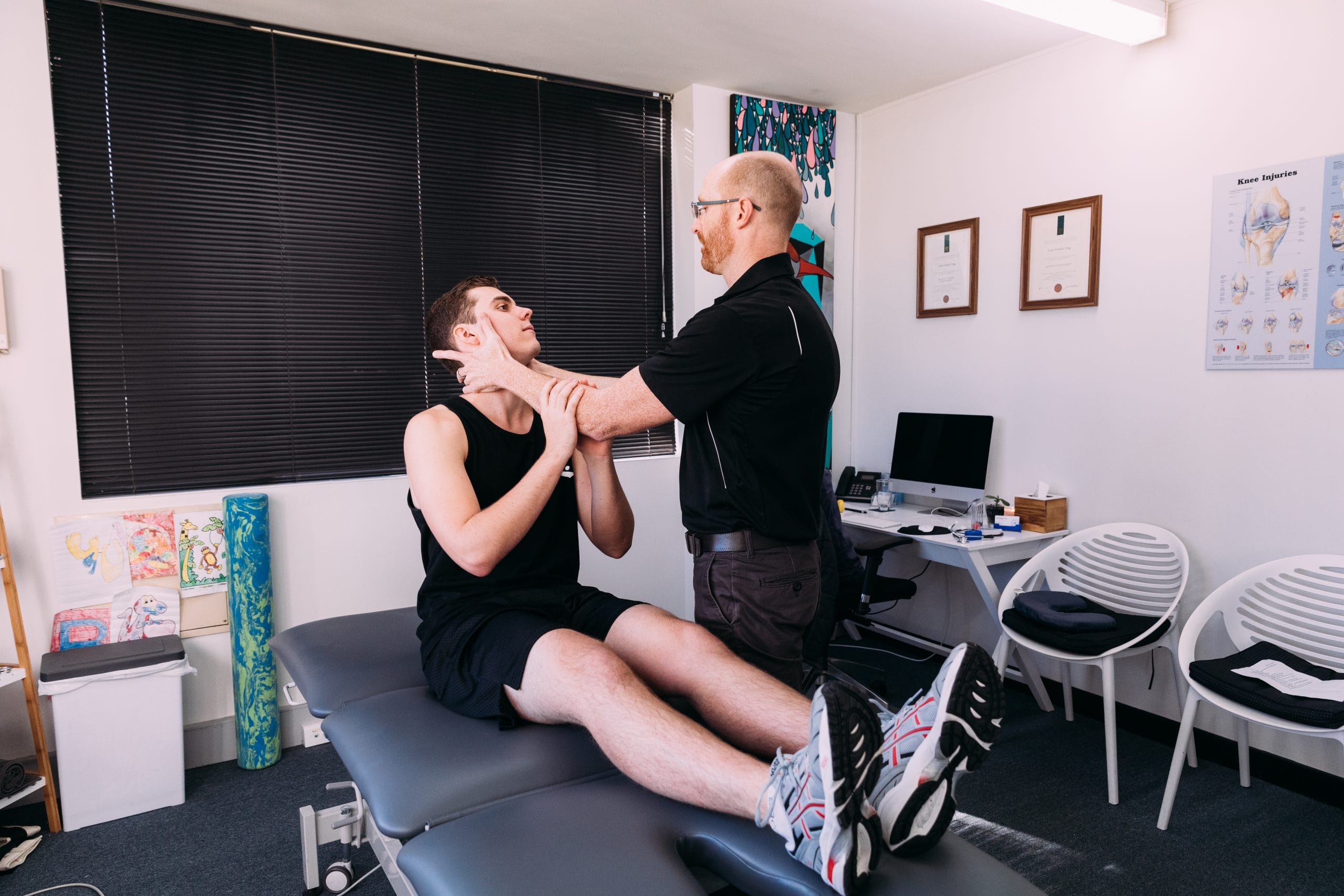
You might have heard about the “pelvic floor”, but do you know what it is or why it’s so important?
This humble set of muscles, which lies like a hammock from your tailbone to your pubic bone, plays a starring role in your everyday health.
Your pelvic organs support your bowel, bladder, uterus or prostate, and even contribute to sexual function and stabilising your core.
But like all stars, the pelvic floor can falter without proper care, leading to a multitude of problems that can seriously impact your quality of life.
But don’t worry – when it comes to learning how to strengthen pelvic muscles, we’ve got you covered.
What is the pelvic floor?
The pelvic floor is a crucial part of our body’s internal structure.
Comprising a series of muscles and connective tissues, it spans the area from the tailbone (coccyx) at the back, to the pubic bone at the front.
This supportive network of structures acts somewhat like a sling, holding in place vital organs such as the bladder, uterus or prostate, rectum, and also forming a part of the core stabilisation system.
In addition to maintaining continence (control over bowel and bladder functions), the pelvic floor also plays a role in sexual functions and provides support for the spine.
Pelvic floor dysfunction: causes and symptoms
Pelvic floor dysfunction arises when the muscles of the pelvic floor are either too weak or too tight.
A weak pelvic floor can happen due to a variety of reasons, including:
- Age
- Obesity
- Heavy lifting
- High-impact sports
- Hormonal changes
- Pregnancy and childbirth
- Surgery
- Chronic coughing
On the other hand, a tight pelvic floor may be caused by:
- Trauma
- Surgery
- Frequent straining during bowel movements
Signs of weak pelvic floor muscles
Symptoms of weak pelvic floor function can range from the inconvenient to the downright distressing.
You may experience:
- Unexpected urine leakage when you sneeze, cough, laugh, or exercise (also known as urinary incontinence)
- Pain in the lower back, hips, or pelvic region
- An urgent need to go the toilet or lack of bladder control
- Difficulty in fully emptying your bladder or bowels
- Constipation or straining with bowel movements
- Discomfort during sexual intercourse
Women might experience pelvic organ prolapse (a sensation of heaviness or dragging in the vagina), while men could face erectile dysfunction.
And it’s not just about the physical discomfort – these issues can cause embarrassment and anxiety.
But you’re not alone. These problems are far more common than most realise and can affect both men and women across different ages and life stages.
Plus, there are a range of pelvic floor exercises you can start to implement in your everyday life to regain strength.
Pelvic floor exercises
Like your own personal gym, pelvic floor muscle training can be done right at home. Here’s a step-by-step guide to two simple exercises you can incorporate into your daily routine.
Make sure when doing the following you are engaging the right muscles to target your pelvic floor.
Kegel exercises
These exercises are the cornerstone of any pelvic floor strengthening program. To do Kegel exercises correctly, imagine that you’re trying to stop the flow of urine or hold in gas. Tighten these muscles, hold for 5-10 seconds, and then relax. Repeat this 10-15 times, three times a day.
Pelvic tilts
Lie in a comfortable position on your back with your knees bent. Tighten your pelvic floor and push your lower back into the floor, then relax. Repeat this 10 times.
Deep squats
Stand with your feet hip-width apart and lower your body as far as you can by pushing your hips back and bending your knees. Make sure to keep your chest upright. Deep squats can help engage your pelvic floor muscles along with your lower body.
Bridges
Lie on your back with your knees bent and your feet flat on the floor. Tighten your pelvic floor and lift your hips off the floor, hold for a few seconds, then lower back down. Repeat this 10-15 times, two to three times a day.
Wall sits
Stand against a wall with your feet shoulder-width apart. Slide down until your knees are at a 90-degree angle, and hold the position while contracting your pelvic floor for 10 seconds. Repeat 10-15 times.
Pilates and yoga
Both clinical pilates and yoga include exercises that can help to strengthen your pelvic floor muscles. In particular, pilates moves such as the ‘clam shell’, ‘leg lifts’, and ‘plank pose’ can all be beneficial when performed correctly.
Split tabletop
This is an advanced Pilates move. Lie on your back with your knees bent, feet in the air and thighs together. Engage your pelvic floor and lower your right foot down towards the floor, while keeping the 90-degree bend in your knee. Bring it back up and repeat with the left foot.
How to prevent pelvic floor weakness
- Maintain a healthy weight: extra weight can put undue pressure on your pelvic floor muscles. Maintaining a healthy weight through a balanced diet and regular exercise can help prevent weakening of these muscles.
- Avoid heavy lifting: if your job or daily activities involve lifting heavy objects, make sure to use proper techniques and engage your core to reduce the strain on your pelvic floor.
- Manage chronic coughs: chronic coughing from conditions like asthma or smoking can also strain your pelvic floor muscles. If you have a persistent cough, seek medical treatment to manage it.
- Pregnancy and childbirth: if you’re pregnant or planning to become pregnant, consider consulting a pelvic floor physiotherapist. They can provide exercises and strategies to maintain pelvic floor strength during pregnancy and facilitate recovery after childbirth.
Other ways to prevent and strengthen your pelvic floor include maintaining good posture, establishing regular healthy bowel habits, and ensuring you’re healthy and hydrated.
The science of strengthening: how physiotherapy can help
While home exercises are a great start, working with a professional physiotherapist can offer more personalised guidance.
Physiotherapy offers an evidence-based approach to strengthening this essential muscle group.
The principle is simple – by regularly exercising these muscles, just like you would any other in the body, you can increase their strength and endurance.
This not only helps to manage symptoms but can improve other areas of fitness such as core stability and sexual health.
When to see a professional for your pelvic floor
If you’re experiencing any of the symptoms related to pelvic floor dysfunction, it’s crucial to seek professional help.
Many people overlook these signs or accept them as part of ageing or a natural aftermath of childbirth.
However, ignoring these symptoms can lead to a decline in quality of life and even serious health complications in the long run.
Physiotherapists are trained to diagnose and treat pelvic floor dysfunction. They can provide a thorough evaluation, design a personalised exercise plan to strengthen your pelvic floor muscles, and offer guidance and support throughout your recovery process.
Additionally, if you’re planning a pregnancy, have undergone surgery in the pelvic area, or participate in high-impact sports, you might also benefit from consulting with a professional to prevent potential pelvic floor issues.
Don’t let pelvic floor issues hold you back
If you’ve been struggling with symptoms of a weak pelvic floor, there’s no better time than now to seek help.
By learning how to strengthen your pelvic floor, you’re investing in your overall health and wellbeing.
Whether you’re a man or a woman, an expectant mother or a fitness enthusiast, our team of dedicated physiotherapists is ready to help you.
Let’s go on the journey to a strong pelvic floor – book an appointment with Integrity Physio South Perth today.



